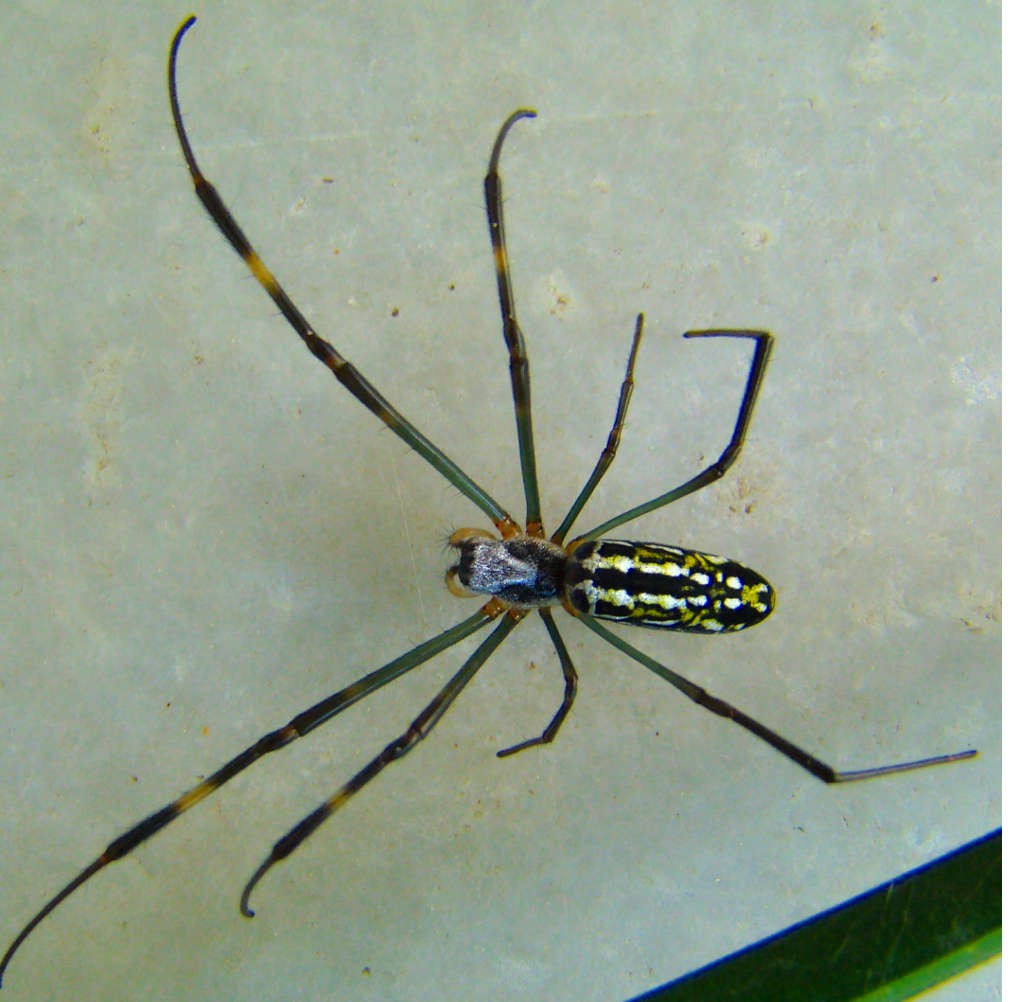
Leucauge spider
The Leucauge spider, also known as the orchard spider, belongs to the family Tetragnathidae and is easily recognized by its long legs and shimmering, silvery-green body. Found in the Great Himalayan National Park (GHNP), these spiders are expert orb-weavers that contribute to the ecological balance by controlling insect populations in forest ecosystems.
Identification and Physical Features
Leucauge spiders are medium-sized and typically display a striking metallic green, silver, and sometimes golden sheen on their abdomen. Their long, slender legs are often banded or translucent, helping them blend into their surroundings. The name Leucauge means “with a bright gleam,” referring to the reflective quality of their bodies.
Leucauge , Tetragnathidae family
Habitat and Distribution in GHNP
In the Great Himalayan National Park, Leucauge spiders are commonly found in lower and mid-altitude forest areas (1,200–2,500 meters). They prefer humid environments with plenty of vegetation, such as bushes, shrubs, and low-hanging tree branches—ideal for anchoring their intricate orb webs.
Web Structure and Hunting
Unlike more aggressive hunters like jumping or sac spiders, Leucauge spiders are passive predators that rely on their beautifully crafted orb webs to trap flying insects like flies, moths, and mosquitoes. They typically hang upside down in the center of the web and quickly immobilize prey with silk once caught. Their webs are usually built in open spaces with filtered sunlight, increasing visibility for attracting prey.
Ecological Role in GHNP
The Leucauge spider plays an important ecological role as a natural pest controller. Their presence in GHNP is an indicator of healthy forest undergrowth and insect biodiversity. By feeding on plant-eating insects, they indirectly protect vegetation and maintain balance in the food web. Additionally, they are prey for birds and wasps, making them integral to multiple trophic levels.
Conclusion
The Leucauge spider is more than just a visually striking arachnid—it is a vital part of the Great Himalayan National Park’s complex ecosystem. By regulating insect populations and serving as prey for other wildlife, it helps sustain ecological balance. Observing these orb-weavers in their natural habitat also highlights the incredible biodiversity protected within GHNP. Protecting species like the Leucauge spider ensures that the intricate web of life in the park remains intact for future generations.



